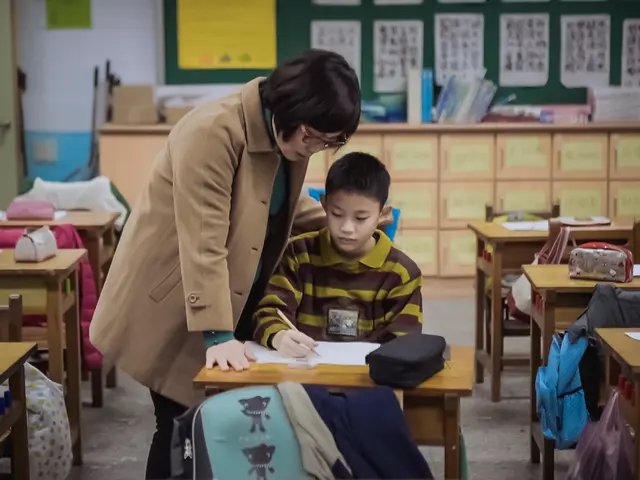Immersive Technology Simulates Realistic Medical Situations for Healthcare Learners
In the realm of medical and nursing education, virtual reality (VR) technology is revolutionizing the learning experience by offering immersive, hands-on practice in a safe and controlled environment. Institutions worldwide are adopting VR to enhance students' technical and interpersonal skills, particularly in sensitive care scenarios.
At Augusta University's College of Nursing, VR simulations are being developed to train nursing students on end-of-life situations. These VR scenes are designed to help students develop empathy and provide support to patients and their families, making them better prepared for the challenges they may face in their future careers.
Other universities are following suit. Purdue University Global, for instance, has developed immersive simulations using 3D animation in VR to help students learn essential skills during the pandemic. Students can view 3D models of the brain and other body parts as if they are standing inside them, providing a unique and engaging learning experience.
Stanford University School of Medicine is another institution leveraging VR technology. They use Surgical Theatre with Oculus Rift to let students handle virtual organs, improving their understanding and preparation for complex cases.
VR platforms also play a crucial role in developing clinical and communication skills. By replicating patient interaction scenarios, they train empathy and decision-making skills that are essential in sensitive contexts such as end-of-life care. Advances in AI and character visualization are expected to further enhance VR's capability in simulating emotional and communication challenges relevant to palliative care.
Projects like VR-HEAL create high-fidelity simulation environments with haptic gloves and device models to provide tactile feedback, helping students understand delicate procedures and the consequences of their actions in real-time. This is critical for patient safety and care quality.
Moreover, VR reduces the need for physical materials and cadavers, making training more accessible and repeatable. This benefits institutions and students alike by providing unlimited practice opportunities without risk to real patients.
NYU's Grossman School of Medicine is another institution using VR and AR to visualize and learn about the human body, without dissecting cadavers. Augusta University, too, has a setup featuring 10 computers and four Oculus VR headsets, with plans to incorporate VR simulations into the palliative care nursing course content this fall.
In conclusion, the immersive nature and ability of VR to simulate complex interactions make it well-suited for educational scenarios involving difficult conversations, ethical decision-making, and compassionate care often encountered in end-of-life nursing and medical contexts. As technology advances, it is expected that VR will continue to play a significant role in medical and nursing education, complementing traditional methods to better prepare students for their future careers.
[1] Surgical Theatre: https://surgicaltheatre.com/ [3] VR-HEAL: https://www.vr-heal.com/ [4] HTC Vive: https://www.vive.com/us/ [5] Source: "Virtual reality in healthcare education: a systematic review" by P. J. G. van der Meer et al. (2020)
- In the field of health-and-wellness, virtual reality (VR) therapies and treatments are being used to improve mental health by simulating real-life scenarios, thereby helping individuals develop coping mechanisms and resilience.
- By providing an interactive and immersive learning environment, technology such as VR is being utilized in education-and-self-development to teach nutrition, enabling students to visualize and understand complex food structures and their effects on the body.
- Fitness-and-exercise apps using VR technology offer engaging workout experiences, making physical activity more enjoyable and accessible, thereby encouraging a healthier lifestyle and promoting overall well-being.
- In the science of medicine, virtual reality simulations are playing a crucial role in enhancing nursing and medical students' education by offering hands-on practice in various scenarios, which leads to improved decision-making skills and better preparedness for future careers.




